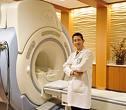
September 1, 2009 - After the DRA took effect, office MRI volume dropped among radiologists but increased among nonradiologist physicians (NRPs), and payments for MRI to both dropped, but the percentage decrease to radiologists was greater, according to a study published in the September issue of the Journal of the American College of Radiology (JACR).
The researchers also found that office CT volume increased slightly among radiologists but increased much more among NRPs on a percentage basis. Payments for CT imaging to radiologists dropped, yet increased to NRPs.
Authors of the study, The Disproportionate Effects of the Deficit Reduction Act of 2005 on Radiologists' Private Office MRI and CT Practices Compared With Those of Other Physicians, set out to compare the effects of the DRA on the in-office MRI and CT practices of radiologists and NRPs.
Since the Deficit Reduction Act of 2005 (DRA) sharply reduced technical component payments for private office magnetic resonance imaging (MRI) and computed tomographic (CT) imaging, NRPs have been able to make up for revenue shortfalls by self-referring more examinations, while radiologists have no control over referrals.
The nationwide Medicare Part B databases for 2002 to 2007 were studied. All MRI and CT codes were selected. Using Medicare physician specialty and place-of-service codes, examinations performed in private offices by radiologists were identified and compared with those performed by NRPs. Trends in procedure volume and payments were studied. The pre-DRA compound annual growth rates for 2002 to 2006 and the post-DRA one-year rates for 2007 are reported.
Results
For MRI, radiologists' private office volume increased by 8.4 percent yearly from 2002 to 2006 but then dropped by 2.0 percent in 2007. Nonradiologist physicians' office volume increased by 24.8 percent yearly, then increased by another 7.6 percent in 2007. Office MRI payments to radiologists increased by 11.2 percent yearly from 2002 to 2006 but then dropped by 30.1 percent in 2007. Nonradiologist physicians' office MRI payments increased by 25.7 percent yearly, then dropped by 23.5 percent in 2007. For CT imaging, radiologists' private office volume increased by 11.2 percent yearly from 2002 to 2006 but then increased by only 2.9 percent in 2007. Nonradiologist physicians' office volume increased by 31.8 percent yearly, then increased by another 18.1 percent in 2007. Office CT payments to radiologists increased by 13.4 percent yearly from 2002 to 2006 but then dropped by 5.2 percent in 2007. Nonradiologist physicians' office CT payments increased by 34.9 percent yearly, then increased by another 8.3 percent in 2007.
The authors of the study concluded that these results suggest that NRPs may be able to ameliorate the effects of the DRA by increasing self-referral, and these trends are of concern and should be scrutinized in future years.
Reference: Levin, David C. et al. The Disproportionate Effects of the Deficit Reduction Act of 2005 on Radiologists' Private Office MRI and CT Practices Compared With Those of Other Physicians, Journal of the American College of Radiology (JACR).Volume 6, Issue 9, Pages 620-625 (September 2009).
For more information: www.jacr.org


 December 15, 2025
December 15, 2025 









